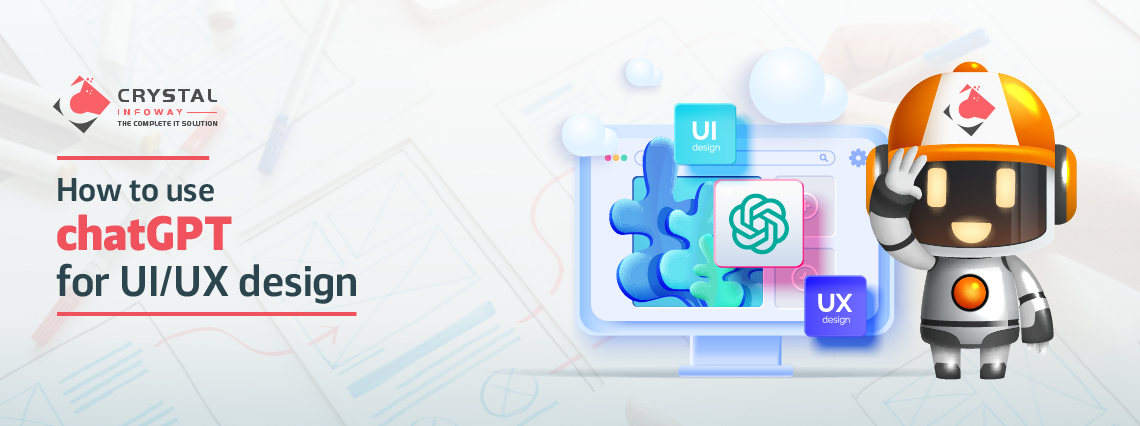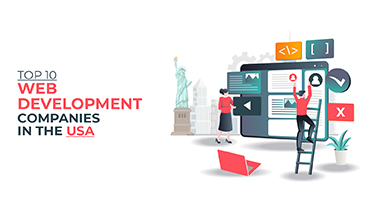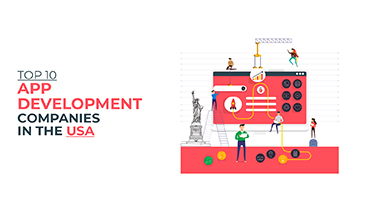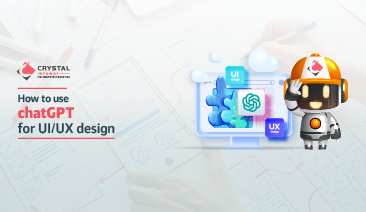
Request a Call Back
Enter your contact details and one of our friendly team member will be in touch soon!.

Enter your contact details and one of our friendly team member will be in touch soon!.

Have you ever wished for a tool that could make UI/UX design processes quicker and more efficient? Look no further than ChatGPT! ChatGPT is an AI-powered platform that provides real-time feedback and personalized recommendations for users. But why is ChatGPT relevant to UI/UX design? Well, it streamlines the design and development processes while enhancing user research and testing.
In this blog, we will dive deeper into understanding UI/UX design and explore how ChatGPT can enhance it. We will also take a look at case studies of using ChatGPT for UI/UX design and discuss the limitations and challenges of using this tool. Additionally, we will take a glimpse into the future of ChatGPT in UI/UX design. So sit tight and get ready to learn how ChatGPT can revolutionize your design processes!
The introduction of ChatGPT and its relevance to UI/UX design can be a bit technical, but let's make it fun and lighthearted. Are you tired of designing for hours, only to receive impractical feedback from users? Have you ever wished for a robot that can analyze user feedback and translate it into design? Well, ChatGPT is your knight in shining armor. UI design, also known as User Interface design, involves designing an interface that caters to the user's visual experience.
On the other hand, UX design or User Experience design is all about enhancing the accessibility, usability, and satisfaction a user derives from an interface. The design of a UI/UX design is essential to the success of a business. If you want to design for people, you must understand people's needs and design towards their convenience. A poor interface design will lead to low engagement, reduced satisfaction, and also bad brand image. If you want to stay ahead of the competition, you must think beyond interface design. This is where ChatGPT comes in handy.
With the power of Artificial Intelligence, ChatGPT can transform your user interface and design experience. It can provide you with real-time feedback on designs, provide personalized recommendations for users, streamline design, and development processes, and also enhance user research and testing. In case, UI/UX design is necessary for businesses to reach and satisfy their clients. ChatGPT offers a unique opportunity to enhance the user interface and client satisfaction. So why don't we give it a try? Let's experience the power of ChatGPT together!
UI/UX design is a crucial component of creating any successful product or website. It is all about understanding the user's needs, desires, and behavioral patterns to craft an interface that is not just good-looking but also efficient and user-friendly. With the rapid advancement of technology, the process of designing and testing UI/UX has become more streamlined than ever before. One such technology is ChatGPT. ChatGPT is an AI-powered chatbot designed for various purposes, like answering questions, generating personalized content, or even designing UI/UX. It can interact with users through natural language processing, providing them with useful suggestions and recommendations, and helping designers improve their design decisions. How can ChatGPT enhance UI/UX design, you ask? Here are a few key points: Real-time feedback on designs One of the most significant benefits of using ChatGPT for UI/UX design is the real-time feedback it provides.
Designers can get an instant response on their designs, making the design iteration process much faster. With ChatGPT, designers can receive valuable feedback on layout, colors, typography, and other elements of the design, making their lives easier and allowing them to focus on other more important aspects of the design. Providing personalized recommendations for users User experience is fundamental in UI/UX design, and with ChatGPT, designers can create personalized experiences. The chatbot can analyze user behavior and recommend design changes that will enhance the user experience. For instance, it can provide recommendations on personalized layouts, font sizes, and colors based on the user's browsing history and habits. Streamlining design and development processes ChatGPT can assist designers in streamlining their design and development processes. With its assistance, designing and developing a product can take much less time or effort.
The chatbot can provide suggestions on wireframing, layout design, and navigation, saving designers a lot of time and effort in trial and error stages. Enhancing user research and testing UI/UX design requires a lot of research, and ChatGPT can make this process easier. With the knowledge it has, the chatbot can provide recommendations on user research and testing, helping designers understand user behavior. It can also assist in identifying gaps in user experience and suggest design alterations to mitigate them. Overall, ChatGPT can be an incredible time-saver for UI/UX designers, streamlining the designing and development processes while providing valuable feedback. However, as with anything, there are limitations and challenges to the technology.
When it comes to UI/UX design, ChatGPT can do wonders. Several businesses have already made the most of conversational AI-powered tools for UI/UX design. Different ways in which ChatGPT can enhance UI/UX design have already been discussed in the earlier section. Now let us dive into some of the case studies that involve the use of ChatGPT for this purpose.
Case Study 1: Improving website conversion rates An online e-commerce business was not able to optimize its product page for a better conversion rate. The ChatGPT was leveraged to understand their audience and the product pages that were not performing well. The model suggested adding targeted user reviews (within a threshold of 3), which were found to be reliable and trustworthy. The product page conversion rate went up by 14.4% due to this recommendation.
Case Study 2: Enhancing mobile app user experience A top-tier financial institution was looking for ways to enhance the user experience on their mobile application. A conversational model was built by ChatGPT that could take in user inputs and suggest personalized recommendations according to their preferences and behavior. The institution found a 25% improvement in session duration and a 12.5% increase in conversion rates with the recommendations from ChatGPT.
Case Study 3: Streamlining e-commerce checkout process A growing e-commerce company was looking for ways to improve the user experience and streamline its checkout process. The company partnered with ChatGPT to create a conversational model that could provide real-time feedback on the design of the checkout process. The ChatGPT model could detect usability issues and recommend improvements. Following the suggestions resulted in a 15% improvement in checkout completion rates. The use of ChatGPT in all three case studies has improved the customer experience significantly. With ChatGPT, businesses can streamline their UI/UX design process to provide their users with a personalized and engaging experience. However, as with all technology, there are also some limitations and concerns, which are discussed in the next section.
While ChatGPT is a powerful tool for enhancing UI/UX design, it does come with limitations and challenges that must be considered. One of the primary challenges is language and cultural barriers. ChatGPT may not have the same understanding of certain cultural nuances or idioms, which could lead to inaccuracies in recommendations. The accuracy of recommendations is another limitation to consider. Although ChatGPT is a highly advanced AI tool, it is still prone to errors and may not always provide the most accurate recommendations.
User research and testing are still important aspects of UX design that should not be overlooked. Privacy and security concerns are also important to consider when using ChatGPT. Users’ personal information and data must be protected, and there is always a risk of a security breach. As such, it is important to have proper security measures in place when using ChatGPT. Despite these limitations and challenges, ChatGPT remains a valuable tool for enhancing UI/UX design. By keeping these challenges in mind and working to address them, designers can continue to leverage ChatGPT to streamline their design processes and provide a better user experience.
The future of using ChatGPT in UI/UX design is exciting, as advancements in AI technology continue to push the boundaries of what is possible. With access to more data and more sophisticated algorithms, ChatGPT will be able to provide even more accurate and personalized recommendations to designers and users alike. Furthermore, integration with other design tools will make the design process even more streamlined and efficient. ChatGPT has the potential to become an all-in-one design tool that can handle everything from feedback generation to testing and optimization. Finally, better personalization and customization options will allow ChatGPT to cater to a wider range of design needs and preferences. Whether you prefer a minimalist aesthetic or a more vibrant and colorful design, ChatGPT can help you achieve your vision. Overall, the future looks bright for ChatGPT in UI/UX design, and we can't wait to see what comes next.
In summary, ChatGPT can greatly enhance your UI/UX design by providing real-time feedback, personalized recommendations, streamlining processes, and improving user research. Its application has been highlighted in various case studies and the future looks bright with advancements in AI technology. However, limitations and challenges such as language and privacy concerns should also be taken into account. Overall, incorporating ChatGPT into your UI/UX design strategy can result in significant improvements and ultimately lead to better user experiences.



Searching for the USA app development comp...
Read More